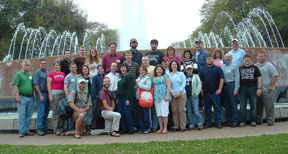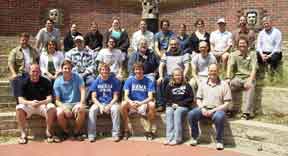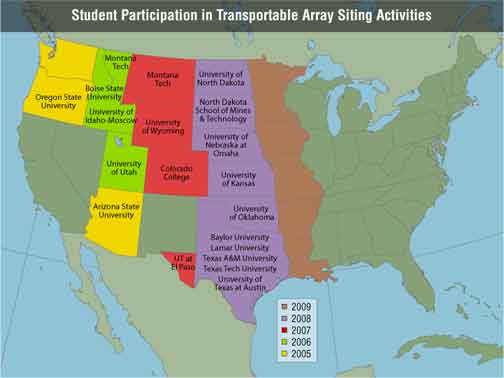University Students Identify Sites for Transportable Array Stations
Over the summer, 32 students and 10 professors from universities in North Dakota, South Dakota, Nebraska, Kansas, Oklahoma and Texas identified sites for more than 325 future Transportable Array stations in those states. This is the fourth year that students have conducted site reconnaissance for the Transportable Array as it slowly rolls across the US.
The Student Siting Program is a 10-week effort that begins with a multi-day workshop to introduce selected students and their faculty sponsors to seismic station requirements and a variety of mapping tools. In addition to presentations on topics such as siting criteria and communications options, the training includes a day in the field to provide students an opportunity to evaluate actual sites and to gain experience using GPS units, cameras, cell phones, and other field equipment and techniques.
Once assigned a geographic working area, each 2-person team uses GIS-based suitability maps to identify potential locations for further investigation. The team then travels to these sites to determine the best location for the seismic station. An important aspect of the students' task involves interacting with landowners. The students also prepare detailed reconnaissance reports for each site to document their findings and recommendations. USArray reconnaissance staff later verifies each site and obtains the permit from the landowner.
This program has proven to be an efficient way to locate a large number of sites for Transportable Array stations. It also provides an exciting learning opportunity for students and involves participation of universities within the region.
From 2005 to 2007, 38 students conducted site reconnaissance for more than 300 sites in Oregon, Washington, Arizona, Utah, Idaho, Montana, Wyoming, Colorado, and in the Big Bend area of Texas. In 2009, sites in Minnesota, Iowa, Missouri, Arkansas and Louisiana will be identified.
 |
 |
Students and professors from Oklahoma and Texas (left) and North Dakota, South Dakota, Nebraska,and Kansas (right) along with Transportable Array staff during their introductory workshop.



